The first version of Zhuyin Fuhao (aka. Bo-Po-Mo-Fo = BPMF) was
introduced by the Ministry of Education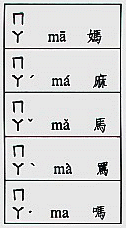 of
Taiwan during
the second year of the republic, in 1913. It underwent several adjustments
attaining its present form around 1930. Intended as a pedagogical tool to
teach standard Mandarin reading, this transliteration system is still used today
in the schools of Taiwan. Elementary students learn this first, gradually
inserting Hanzi characters as they learn them.
of
Taiwan during
the second year of the republic, in 1913. It underwent several adjustments
attaining its present form around 1930. Intended as a pedagogical tool to
teach standard Mandarin reading, this transliteration system is still used today
in the schools of Taiwan. Elementary students learn this first, gradually
inserting Hanzi characters as they learn them.
The characters are based on Chinese calligraphic forms, some of them derived directly from existing Chinese characters. Zhuyin may be printed alongside Hanzi characters to indicate pronounciation and tone, a feature particularly useful for teaching Mandarin to native speakers of other Chinese dialects. Tones are the same as in Pinyin, but the first tone is unmarked and the neutral tone is a dot. The consonants below are in dictionary order. The following words are written without the "i" (just as consonants) in Zhuyin: zhi, chi, shi, ri, zi, ci, si.
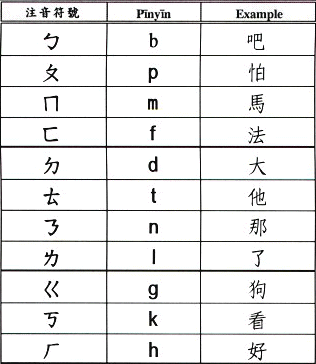
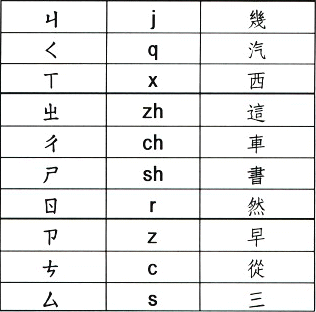
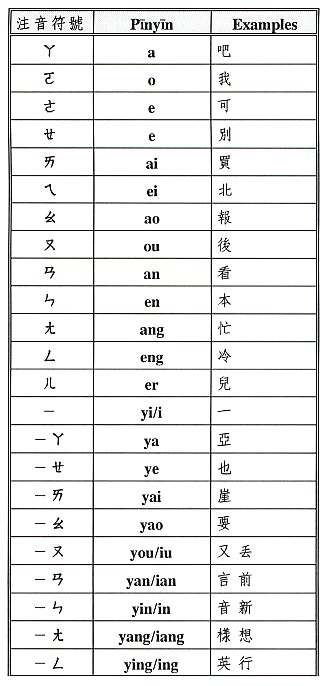 |
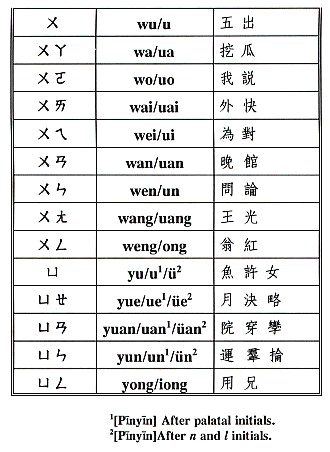
n = nasal
|